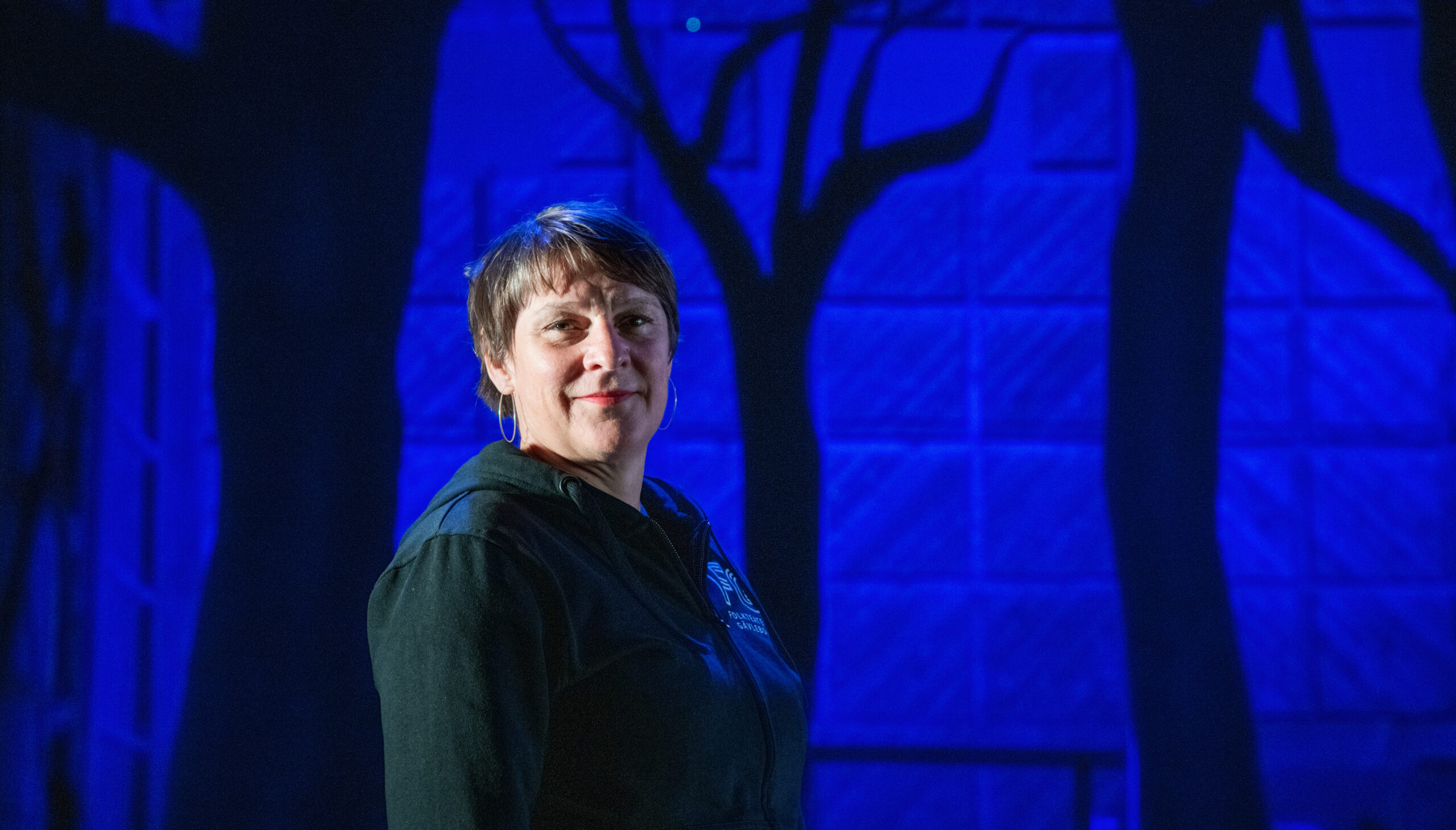
That Maria Ros would end up working with lighting design in her professional life was far from obvious. She didn’t even know the profession existed. In fact, she was aiming to become a dancer, but a back injury put an end to that dream. Through an internship at the Folkoperan, she came into contact with lighting design—and immediately felt like she had found her true calling.
When Maria describes her work, she uses the words “movement and musicality”. Lighting design shares something essential with dance: its impermanence—everything happens here and now. She works intuitively and organically, something she also associates with dance.
But the beginning of a new production is more concrete:
– I always start by reading the script and listening to the music. Then I have a lot of conversations, especially with the director and the set designer. It’s about creating a shared vision of the world we want to portray, says Maria Ros.
The role of lighting is twofold, she explains:
– One aspect is more concrete: telling the audience whether it’s day or night, winter or spring. The other task is to create moods and emotions.
Three basic parameters guide a lighting designer’s work: intensity, color, and direction. And certain directions she likes to return to—something of a safe bet in her designs.
– I also have a particular fondness for certain color tones. And I have a bit of a hard time lighting something to make it look intentionally ugly. That’s something I have to work on.
The opera house at Skäret fascinates her—not least because of its spaciousness, but that space also presents challenges.
– Sometimes I curse a bit inwardly, she admits. If during rehearsals you realize a light should be placed somewhere else—and it’s positioned very high—then it’s quite a hassle to change it.
When everything is in place and the curtain rises, the light has a crucial function, according to Maria:
– It should be the glue between all the artistic expressions. It helps tie all the parts of the production together.